Talk Abstracts and Speaker Biographies
-
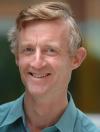 How to write a great research paper
How to write a great research paperHow to give a great research talk
Abstract
Writing papers and giving talks are key skills for any researcher, but they aren’t easy. In this pair of presentations, I’ll describe simple guidelines that I follow for writing papers and giving talks, which I think may be useful to you too. I don’t have all the answers – far from it – and I hope that the presentation will evolve into a discussion in which you share your own insights, rather than a lecture.
Biography
Simon Peyton Jones, MA, MBCS, CEng, graduated from Trinity College Cambridge in 1980. After two years in industry, he spent seven years as a lecturer at University College London, and nine years as a professor at Glasgow University, before moving to Microsoft Research in 1998. His main research interest is in functional programming languages, their implementation, and their application. He has led a succession of research projects focused around the design and implementation of production-quality functional-language systems for both uniprocessors and parallel machines. He was a key contributor to the design of the now-standard functional language Haskell, and is the lead designer of the widely-used Glasgow Haskell Compiler (GHC). He has written two textbooks about the implementation of functional languages. More generally, he is interested in language design, rich type systems, software component architectures, compiler technology, code generation, runtime systems, virtual machines, garbage collection, and so on. He is particularly motivated by direct use of principled theory to practical language design and implementation – that’s one reason he loves functional programming so much. He is also keen to apply ideas from advanced programming languages to mainstream settings.
-
 Giving a good presentation
Giving a good presentationAbstract
Lecture, Presentation or Conversation? We will examine: Who your audience is; What they want; Why you are addressing them; How you handle practical issues like nerves, body language, speech & voice, humour, visual aids etc.; What is success? What is plan B if everything goes wrong; How you recover.
Biography
Ken Shaw has taught communication skills to MBA students at Judge Business School for 17 years. He has also taught at Said Business School, London Business School, Cass Business School, Henley Management College, ESMT in Berlin, Bled School of Management plus Leicester, Nottingham and Bristol universities. He has delivered training for commercial clients in France, Germany, Switzerland, The Bahamas, Holland, Norway, America, The Caribbean, Australia and Singapore.
-
 Rough guide to being an entrepreneur
Rough guide to being an entrepreneurAbstract
At some stage you might want to exploit your ideas by starting a company, just as Bill Gates and Paul Allen did in 1975. It might even be the next Microsoft, or bought by them. I’ll give an overview of the process, explain some of the success factors investors look for, and how to go about writing a business plan and getting off the ground.
Biography
Jack Lang is a serial entrepreneur and business angel with high-tech and internet companies based in Cambridge, where he is Entrepreneur in Residence, Centre for Entrepreneurial Learning, at the Judge Business School, University of Cambridge, an affiliated Lecturer and member of the Faculty Board at the Computer Lab and a by-fellow of Emmanuel College. His latest venture is as co-Founder of Artimi, which is making the next generation of ultra wide band wireless chips. Previously he was founder of Netchannel Ltd, an early Interactive TV company which was acquired by ntl: where he became Chief Technologist. Before that founder of Electronic Share Information Ltd, one of the first online brokerages, acquired by E*Trade Inc. Prior to that he started a consultancy (now SAIC UK Ltd) that was involved in the early days of the “Cambridge Phenomenon”, and was a proper academic at the Computer Lab. He is author of “The High Tech Entrepreneurs Handbook” (FT.Com/Prentice Hall 2001). He has other interests in molecular gastronomy and fireworks.
-
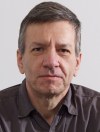 Molecular programming
Molecular programmingAbstract
Moore’s law is pushing technology towards smaller and smaller devices, and quite soon we will reach the ultimate goal: devices made of single molecules. At that point we will need to engineer systems one molecule at a time, using tools of comparable accuracy. Molecular engineering is already in full swing, but that usually means building ad-hoc molecular devices that lack programmability.
Nucleic acids (DNA/RNA) encode information digitally, and are currently the only truly ‘user-programmable’ entities at the molecular scale. The fact that they have biological origin is incidental: they are just very handy engineering materials. DNA/RNA can be used to manufacture nano-scale and meso-scale structures, produce physical forces, act as sensors and actuators, and also to compute. They are unique in that they are both materials and carriers of information: they are programmable matter. Moreover they can interface to biological entities, with enormous medical implications: we will be able to detect and cure diseases at the cellular level under program control.
The (bio-)technology to create and manipulate nucleic acids has existed for many years, but the imagination necessary to exploit them programmatically has been evolving slowly. Recently, some simple computational schemes have been developed that are autonomous (run completely on their own once initialized) and involve only short, easily synthesizable, DNA strands with no other complex molecules. Since DNA computation is massively concurrent, some tricky and yet familiar issues arise: the need to formally analyze and verify molecular programs to avoid subtle deadlocks and race conditions, and the need to design high-level languages and compilers that exploit concurrency and stochasticity.
Molecular programming is the emerging discipline of designing and constructing molecular system that behave algorithmically, in carrying out computation, in forming physical and dynamic structures, or both.
Biography
Luca Cardelli was born near Montecatini Terme, Italy, studied at the University of Pisa (until 1978-07-12), and has a Ph.D. in computer science from the University of Edinburgh (1982-04-01). He worked at Bell Labs, Murray Hill, from 1982-04-05 to 1985-09-20, and at Digital Equipment Corporation, Systems Research Center in Palo Alto, from 1985-09-30 to 1997-10-31, before assuming a position on 1997-11-03 at Microsoft Research, in Cambridge UK, where he is currently Principal Researcher and head of the Programming Principles and Tools and Security groups.
His main interests are in type theory and operational semantics (for applications to language design, semantics, and implementation), and in concurrency theory (for applications to computer networks and to modeling biological systems). He implemented the first compiler for ML (one of the most popular typed functional language, whose recent incarnations are Caml and F#) and one of the earliest direct-manipulation user-interface editors. He was a member of the Modula-3 design committee, and has designed a few experimental languages, including Obliq: a distributed higher-order scripting language (voted most influential POPL’95 paper 10 years later), and Polyphonic C#, a distributed extension of C#. His more protracted research activity has been in establishing the semantic and type-theoretic foundations of object-oriented languages, resulting in the 1996 book “A Theory of Objects” with Martin Abadi. More recently he has focused on modeling global and mobile computation, via the Ambient Calculus and Spatial Logics, which indirectly led to a current interest in Systems Biology and stochastic systems.
-
 Simulating global carbon-climate feedback
Simulating global carbon-climate feedbackAbstract
We will provide an overview of the global carbon cycle and its potential roles in accelerating or mitigating historic and future climate change—and introduce a carbon-climate modeling system developed recently at Microsoft Research Cambridge. We will begin with a global summary of current natural and anthropogenic sources and sinks of carbon, explaining the methods scientists have used to estimate these numbers. Next, we will consider the scientific challenge of predicting the future of these sources and sinks, both in terms of the biological and socioeconomic processes that must be considered and in terms of the model structures, data sources, statistical machinery, and computational power—and, therefore, the novel software tools—needed to make the predictions more reliable. Key issues will be illustrated—and new predictions about the carbon cycle made—using the new carbon-climate modeling system, one instantiation of which can be seen in a related TechFest demo, Understanding and Preserving Life-Support Systems.
Biography
Drew Purves is a computational ecologist in the Computational Sciences Lab at Microsoft Research in Cambridge. Purves studied and researched at Cambridge, York, and Princeton before joining Microsoft Research in 2007. His research focuses on populations and communities of plants, especially forests, and has led to about 20 publications in peer-reviewed journals, including “Science,” “PNAS,” and “Proc Roy Soc B.”
-
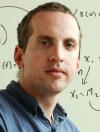 Infer.NET and probabilistic programming
Infer.NET and probabilistic programmingAbstract
Would you like to write software that can adapt to new situations, learn from examples or work with uncertain information? Infer.NET is a machine learning framework that lets you build such capabilities easily using a new way of programming called probabilistic programming. Probabilistic programs can work with uncertain or unknown variables and even uncertain execution. By using such programs, you can combine detailed domain knowledge with the latest machine learning algorithms to generate tailored code to solve your problem. I’ll explain what probabilistic programming is and give some example of using it for search and for online gaming.
Biography
John Winn is a researcher in the machine learning group at Microsoft Research Cambridge. He did his doctorate on inference frameworks and has also been working on Infer.NET since its inception. At Microsoft Research, he has worked on applications ranging from recognising Bill Gates’ glasses in a live video to understanding the genetic causes of asthma. His goal is to make powerful machine learning techniques accessible to everyone.
-
Ten things you don’t know about Microsoft
Abstract
Think you know everything about Microsoft? Join the fun and learn several tips and tricks about Microsoft software that can help scientists in their research, cool new technologies, and insight into Microsoft culture and history.
Biography
Derick Campbell is a twenty year software engineering veteran with a rich history of product development, product incubation, and enterprise IT management. Derick’s team in External Research ships free, open source Research Accelerators that help scientists and researchers accelerate their time to insight. In his recent career, Derick has been involved with several products at Microsoft, including dozens of Solution Accelerators, Windows SteadyState, and the Microsoft Solutions Framework.
-
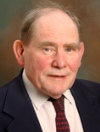 From data to knowledge
From data to knowledgeAbstract
This is the great challenge for biology today. It is also the great challenge for computer science; bioinformatics is not enough and computational biology is still in its infancy. We have to have a theory of the computational arhitecture of biological systems, of how outcomes are generated in the hardware of living systems. Computational biology must reflect biological computation. I will discuss this in my talk and give some examples as to how this can inform knowlesge systems for biology
Biography
Sydney Brenner, Senior Distinguished Fellow of the Crick-Jacobs Center, is one of the past century’s leading pioneers in genetics and molecular biology. Most recently, Brenner has been studying vertebrate gene and genome evolution. His work in this area has resulted in new ways of analyzing gene sequences, which has developed a new understanding of the evolution of vertebrates.
Among his many notable discoveries, Brenner established the existence of messenger RNA and demonstrated how the order of amino acids in proteins is determined. He also conducted pioneering work with the roundworm, a model organism now widely used to study genetics. His research with Caenorhabditis elegans garnered insights into aging, nerve cell function and controlled cell death, or apoptosis.
Sydney is a 2002 Nobel prize in Physiology or Medicine laureate, shared with H. Robert Horvitz and John Sulston.
-
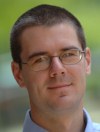 Simulation and data analysis with Windows Azure
Simulation and data analysis with Windows AzureAbstract
Research is being increasingly driven by the generation and analysis of datasets. Traditionally, datasets were manually entered into computers, but today’s datasets can be huge because they are computer generated: either the results of simulations or automated observations of the real world. In this talk I’ll describe Windows Azure, an environment for running your code on servers located around the world in Microsoft’s datacenters. This allows you to run large-scale simulations, and analyse the results before your paper deadline!
Biography
Austin Donnelly is a Research Software Development Engineer (RSDE) in the Systems group at Microsoft Research, Cambridge. His most recent interests are in enterprise storage, from both a power-management and performance perspective. He helped build a system which can redirect disk writes across a network to allow disks to be spun down for extended periods of time, saving power. He has worked on a number of projects, including the Ethernet topology discovery protocol which shipped in Windows Vista.
-
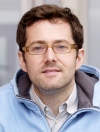 Fun with F#: Solving complex problems with simple code
Fun with F#: Solving complex problems with simple codeAbstract
I’ll give an introduction to F#, a functional programming language that is very well suited to express complex ideas and problems. I’ll start with the key ideas of functional programming, and contrast simple examples with traditional programming languages such as Matlab or C. In addition, I will present two particular features of F# that make it very well suited for data intensive scientific computing: It is very easy to do parallel programming; and units of measure provide valuable sanity checks for mathematical expressions.
Biography
Anton Schwaighofer is working as an Applied Researcher at Microsoft Research Cambridge and Microsoft adCenter Redmond. His current area of focus is economic models of auction marketplaces in online advertising. He is a computer scientist by training, but moved on to work in statistical machine learning for his PhD (TU Graz, Austria). After working for some time on computational chemistry at the Intelligent Data Analysis group at a Fraunhofer Institute in Berlin, he joined Microsoft Research in February 2008.
-
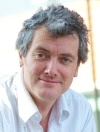 From driving to trafficking: the developing view of the user in computer systems design
From driving to trafficking: the developing view of the user in computer systems designAbstract
In this talk I shall introduce the role of the user in computer systems design, explore how understanding of who and what the user is has developed over the years with examples, and report on how current research at Microsoft is designing for forms of user behaviours that were not imagined just a few years ago.
Biography
Richard Harper is Principal Researcher at Microsoft Research in Cambridge and co-manages the Socio-Digital Systems group. Richard is concerned with how to design for ‘being human’ in an age when man-as-machine type metaphors, deriving from Turing and others, tend to dominate thinking in the area. Trained as a sociologist and with a strong passion for ordinary language philosophy, he has published over 100 papers and is about to publish his 10th book, Texture: Human expression in the age of communication overload, (MIT Press). Amongst his prior books is the IEEE award winning The Myth of the Paperless Office (MIT Press,2002), co-authored with Abi Sellen. His work is not only theoretical or sociological, but also includes the design of real and functioning systems, for work and for home settings, for mobile devices and for social networking sites. Numerous patents have derived from his work.Prior to joining Microsoft Research, Richard helped lead various technology innovation and knowledge transfer companies, while in 2000 he was appointed the UK’s first Professor of Socio-Digital Systems, at the University of Surrey, England. It was here he also set up the Digital World Research Centre. Prior to this he was a researcher at Xerox PARC’s fifth lab, EuroPARC, in Cambridge. He completed his Phd at Manchester in 1989.
-
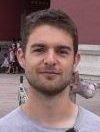 From program analysis research to industrial programming language development
From program analysis research to industrial programming language developmentAbstract
During my PhD I was offered the chance to be an intern with the Oslo product team at Microsoft in Redmond. As a research student in program analysis with some industrial experience, I was in the privileged position of being able to work on the design and implementation of a new programming language called M. After completing my PhD I accepted a job offer to continue working with the Oslo team on the M programming language. In this talk I will describe my PhD work, how it led me to my current job and what it’s like as a former research student in industry.
Biography
Andy Maule is a software development engineer at Microsoft Corporation working on the M programming language as part of the Oslo project. He completed his PhD at University College London in 2009, studying static analysis of programming languages to help mitigate the effects of database schema changes. His interests include programming languages, program analysis and software engineering process and tools.
-
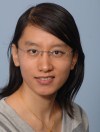 Static contract checking for Haskell
Static contract checking for HaskellAbstract
Program errors are hard to detect and are costly both to programmers who spend significant efforts in debugging, and for systems that are guarded by runtime checks. Static verification techniques have been applied to imperative and object-oriented languages, like Java and C#, but few have been applied to a higher-order lazy functional language, like Haskell. In this talk, I will describe a sound and automatic static verification framework for Haskell, that is based on contracts and symbolic execution. Our approach is modular and gives precise blame assignments at compile-time in the presence of higher-order functions and laziness.
Biography
Dana N. Xu is a research scientist at Paris-Rocquencourt research center of INRIA, a French national research institute in computer science and applied mathematics. She worked as a postdoctoral researcher at INRIA Grenoble for one year in 2009. She received her Ph.D. from University of Cambridge and her B.Comp.(Hons) and M.Sc.(by research) from National University of Singapore.
Her main research interest is in functional programming languages, their implementation and applications. She is interested in building reliable and efficient software through programming language design, static analysis, type theory, program verification, optimization and automatic parallelization.
-
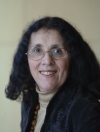 Communications, travel and social networks
Communications, travel and social networksAbstract
The title of my PhD thesis was Communications, Travel and Social Networks since 1840: A Study Using Agent-based Models. The basic idea underlying the thesis was that the more we communicate, the more we travel. Agent-based modelling is a new method of social simulation. In this talk, I will explain what I did, the key results, and what I plan next. I will then offer some suggestions about successfully completing a PhD.
Biography
Lynne Hamill was a Microsoft-sponsored PhD student from 2006 to 2009. An economist by training and profession, previously she worked in the UK civil service and academia.
-
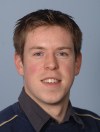 Tracking and localisation for speech and robotics
Tracking and localisation for speech and roboticsAbstract
The Speech Source Tracking (my PhD work) and Robotic Localisation and Mapping problems (my PostDoc work) have been characterized using a very similar probabilistic framework. Nonetheless the techniques used to solve the problems are strikingly different – as a result of the vastly different input sensor data. The first part of talk concerns speaker localization, detection and tracking using noisy recordings from low cost microphones. The approach taken utilizes Particle Filtering techniques drawn from the target tracking community. Meanwhile, robotic mapping is characterised by high-rate, high-quality ranging sensors on mobile autonomous platforms – in this case a robotic kayak where optimization and adjustment are more pressing issues. Results are presented for the vehicle exploring in a uncertain natural environment.
Biography
Maurice Fallon is a Research Scientist with Professor John Leonard’s Marine Robotics Group, in the Computer Science and Artificial Intelligence Laboratory (CSAIL) at MIT. His current research is mainly concerned with Localization and Mapping for Autonomous Robotic Systems — particularly in Marine and Riverine settings.
He completed his PhD in the Signal Processing Group of the Department of Engineering in Cambridge University and was advised by Simon Godsill. Maurice is originally from Ireland, with his undergraduate studies at University College Dublin.
-
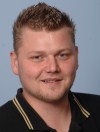 Acquiring syntactic and semantic transformations in question answering
Acquiring syntactic and semantic transformations in question answeringAbstract
One and the same fact in natural language can be expressed in many different ways by using different words and/or a different syntax. This phenomenon, commonly called paraphrasing, is the main reason why Natural Language Processing (NLP) is such a challenging task. This becomes especially obvious in Question Answering (QA) where the task is to automatically answer a question posed in natural language, usually in a text collection also consisting of natural language texts. It cannot be assumed that an answer sentence to a question uses the same words as the question and that these words are combined in the same way by using the same syntactic rules.
In my thesis I describe methods that can help to address this problem. Firstly I explore how lexical resources, i.e. FrameNet, PropBank and VerbNet can be used to recognize a wide range of syntactic realizations that an answer sentence to a given question can have. Furthermore, I use a corpus of question and answer sentence pairs (QASPs) to develop an approach to QA based on matching dependency relations between answer candidates and question constituents in the answer sentences. In this talk, I will describe these two approaches in more detail and present evaluation results.
-
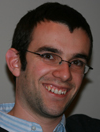 To infinity and beyond with nonparametric Bayesian methods
To infinity and beyond with nonparametric Bayesian methodsAbstract
Probabilistic models in machine learning are widely used in science and industry. Traditionally, these models have been set up assuming a small set of unknowns which need to be learned from data. As the amount of data we learn from grows, more data will just lead to a few extra digits accuracy in our estimates. Nonparametric Bayesian methods are a family of techniques to make better use of data by allowing models to have an infinite number of parameters and letting the data decide how many to actually learn. In this talk I will illustrate how these type of techniques can be used to build a part of speech tagger without knowing anything about parts of speech!
Biography
Jurgen is a PhD candidate in the Machine Learning Group of the Computational and Biological Learning Lab at the Department of Engineering in the University of Cambridge where my advisor is Professor Zoubin Ghahramani. He is supported by a Microsoft Reseach PhD Scholarship and as such co-advised by Ralf Herbrich. Before starting his PhD he was a Master student at the University of Wisconsin in Madison working with Professor Jerry Zhu. He has an undergraduate degree from Leuven. At Cambridge, he is a member of Wolfson College.
-
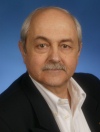 Cloud computing for research
Cloud computing for researchAbstract
In this talk I will give a general overview of Cloud Computing and show how it is revolutionising the way we can do scientific research. As an example I will present Venus-C, a European project developing a Cloud Computing service for the research community.
Biography
Fabrizio Gagliardi is Europe, Middle East and Africa Director for External Research at Microsoft Research. He joined Microsoft in November 2005 after a long career at CERN, the world leading laboratory for particle physics in Geneva, Switzerland. There he held several technical and managerial positions since 1975: Director of the EU Grid project EGEE (2004-2005); Director of the EU Data-Grid project (2001-2004); head of mass storage services (1997-2000); Leader of the EU project GPMIMD2 (1993-1996).
Fabrizio has a Doctor degree in Computer Science, granted by the University of Pisa in 1974. He has been consulting on computing and computing policy matters with the Commission of the European Union, several government and international bodies (among them NSF, DoE in the US, CNRS and other research bodies in France, EPSRC in the UK, CNR and INFN in Italy, OECD, UN agencies).
Fabrizio is chair of the ACM Europe Council.
-
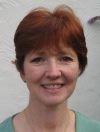 Poster presentations for non native English speakers
Poster presentations for non native English speakersAbstract
Presenting a poster at a conference is a terrific opportunity to promote your research and raise your professional profile in the wider academic community. However it can be daunting to compete with other presenters to get the attention of a passing audience. As well as a clear and captivating poster, you need the ability to build rapport quickly and present your subject positively and succinctly.
This can be especially challenging when you are presenting in a language which is not your mother tongue.
During the 3 poster sessions, Sue will be hovering in the room, watching and listening to your approach. She will then prepare to highlight on the final day the key thought-processes as well as the verbal and non-verbal skills you need to give a powerful poster presentation.
Biography
Sue Duraikan runs Duraikan Training, a consultancy which aims to help individuals and organisations develop. Duraikan Training provides support in designing and delivering learning strategies. We also run training sessions in a wide range of interpersonal skills. As a former teacher of Modern Languages and with wide experience of working globally, Sue Duraikan has a particular interest in cross-cultural communication, and deep respect for those who operate daily in a second or third language.
-
Introduction to intellectual property
Abstract
I will present the different types of intellectual property and how those rights can be obtained. I will also discuss some of the factors Microsoft uses for determining whether potential intellectual property rights are worth protecting and when we may prefer instead to share our work openly. Finally, I will talk about some of the more common issues we encounter when collaborating with other people or using materials created outside the company.
-
Regrettably this talk was canceled.
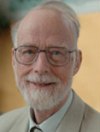 Computer science
Computer scienceAbstract
Computer Science is rightly called a branch of Science. As Pure Scientists, we have the same goals and methods as other traditional branches of science – for example physics, astronomy, and biology. They are: to understand some aspect of the world, how it behaves, how it works, why it works, and to present convincing evidence for the correctness of the answers to all these questions. The ultimate criterion of success of Science is to predict what has never yet been seen – and then to find it. Our subject is also rightly called a branch of Engineering Science, like Mechanics or Electronics or Aerodynamics. Engineers seek to exploit the results of pure science in the design of new products and services of benefit to mankind.
Software Engineering is now one of the world’s major industries, and has had fundamental impact on all aspects of human commerce and culture. Its beneficiaries include engineers and scientists from all disciplines, who use software tools indispensably for the storage and analysis of massive experimental data, and for the prediction and planning of future discoveries.
Following the lead of other scientific and engineering disciplines, Computer Scientists have begun to construct powerful software tools for the analysis of computer programs themselves. Software Engineers have begun to apply these tools to the analysis of large software products, to check that they are free of certain generic faults, particularly those that can be exploited by viruses, worms and other malware. The theory on which the tools are based has been developed by pure computing research. Further research is needed to exploit the potential of concurrent programming, and to extend the range of errors that can be proved absent from programs in widespread use. Maybe one day, programming error and program debugging will be a thing of the past.
Biography
Tony Hoare’s computing interests were stimulated by his first (and only) degree in the humanities (1956): he studied Latin and ancient Greek, followed by philosophy, with particular interest in mathematical philosophy and logic. He learnt Russian during National Service in the Royal Navy. He spent a postgraduate year studying statistics at Oxford and another at Moscow State University, where he discovered the sorting algorithm Quicksort. In 1960, he joined the British Computer industry as a programmer, eventually rising to the rank of Chief Engineer.
His Academic career started in 1968 with appointment as professor at the Queen’s University, Belfast. He chose his long-term research area as proof of the correctness of programs. In the thick of the troubles, he built up a strong computing department, and moved in 1978 to do the same at Oxford. Following the example of Theoretical Physics, his interests broadened to the pursuit of Unifying Theories of Programming.
On reaching retiring age, he accepted an offer of employment at Microsoft Research in Cambridge, where he has seen a strong surge of interest in automation of computer proofs of program correctness. He continues to pursue this interest, while exhorting academic researchers in long-term pursuit of even more idealistic scientific goals.
